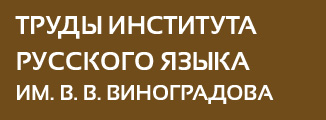HOW DO RUSSIANS VERBALIZE THE ART OF KISSING? AN APPENDIX TO JURIJ D. APRESJAN’S ANALYSIS OF THE VERB CELOVAT’ ‘TO KISS’
Аннотация:
This article analyzes the syntax and semantics of the verb celovat’ ‘to kiss’ in Russian from three perspectives with special attention to the lexical semantic approach advanced by Jurij D. Apresjan. First, the lexical collocation of the target construction is analyzed, and it is demonstrated that this construction can be used outside of the typical meaning of an established gesture for expressing politeness or greetings. It is ascertained, furthermore, that the use of the preposition u in the u+gen. construction is motivated by the need to express non-affectedness and non-cooperation of the recipient of the action initiated by the agent, by comparing with the competing construction with the dative argumentcelovat’ komu čto. Second, the corpus analysis has shown that the preposition u+gen began to appear in the 18th century in literary works which reflect colloquial varieties of Russian. In addition, a statistical analysis has indicated that the preference of the prepositional construction u+gen was overwhelming in the 19th century and sharply declined in the 20th century. Lastly, in terms of the areal distribution of the target construction, it is characteristic particularly for Russian, while in Ukrainian and Belarusian, the equivalent construction with the prepositional construction u+gen can be regarded as a calque from Russian. In those two languages it began to appear in the 19th century, but it is almost out of use today.


